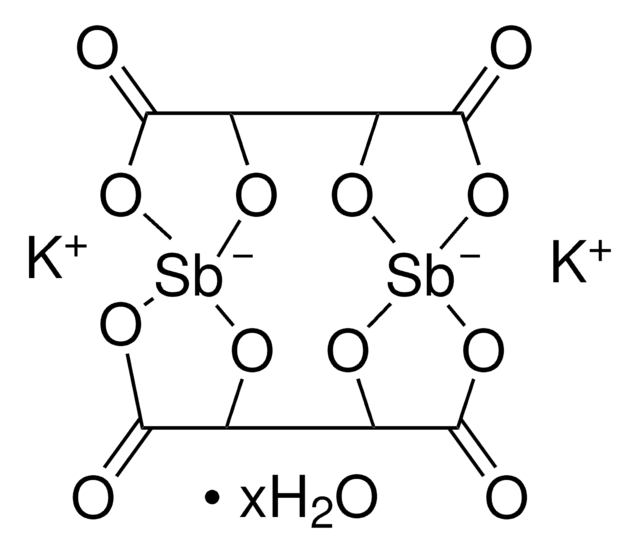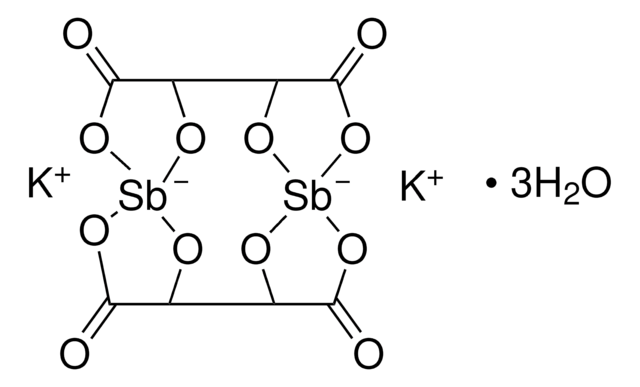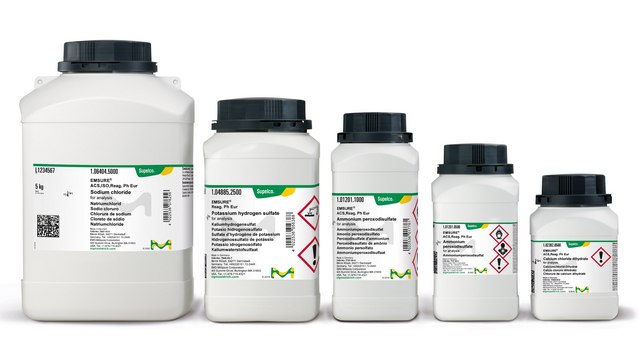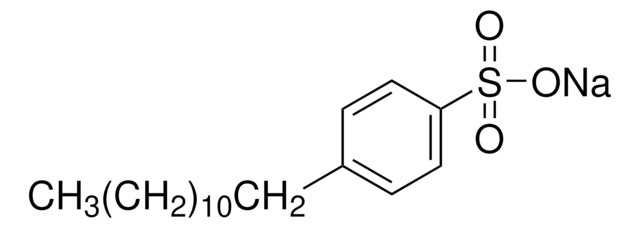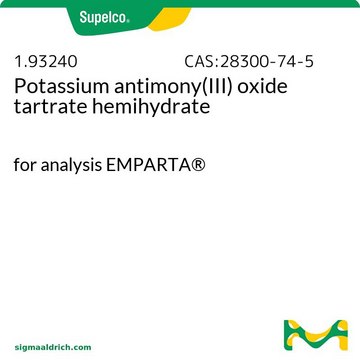383376
Potassium antimonyl tartrate trihydrate
ACS reagent, ≥99%
Synonym(s):
Antimony potassium tartrate trihydrate, Tartar emetic
About This Item
99.0-103.0%
Recommended Products
grade
ACS reagent
Quality Level
Assay
≥99%
99.0-103.0%
form
powder
impurities
≤0.020 meq/g Titr. acid or base
loss
≤2.7% loss on drying
mp
≥300 °C (lit.)
solubility
water: soluble
cation traces
As: ≤0.015%
SMILES string
O.O.O.[K+].[K+].O=C1O[Sb-]23OC1C4O[Sb-]5(OC(C(O2)C(=O)O3)C(=O)O5)OC4=O
InChI
1S/2C4H4O6.2K.3H2O.2Sb/c2*5-1(3(7)8)2(6)4(9)10;;;;;;;/h2*1-2H,(H,7,8)(H,9,10);;;3*1H2;;/q2*-2;2*+1;;;;2*+3/p-4
InChI key
WBTCZEPSIIFINA-UHFFFAOYSA-J
Looking for similar products? Visit Product Comparison Guide
Related Categories
General description
Application
Signal Word
Danger
Hazard Statements
Precautionary Statements
Hazard Classifications
Acute Tox. 3 Oral - Acute Tox. 4 Inhalation - Aquatic Chronic 2 - Skin Irrit. 2 - Skin Sens. 1
Storage Class Code
6.1D - Non-combustible acute toxic Cat.3 / toxic hazardous materials or hazardous materials causing chronic effects
WGK
WGK 3
Flash Point(F)
Not applicable
Flash Point(C)
Not applicable
Personal Protective Equipment
Regulatory Information
Choose from one of the most recent versions:
Already Own This Product?
Find documentation for the products that you have recently purchased in the Document Library.
Our team of scientists has experience in all areas of research including Life Science, Material Science, Chemical Synthesis, Chromatography, Analytical and many others.
Contact Technical Service